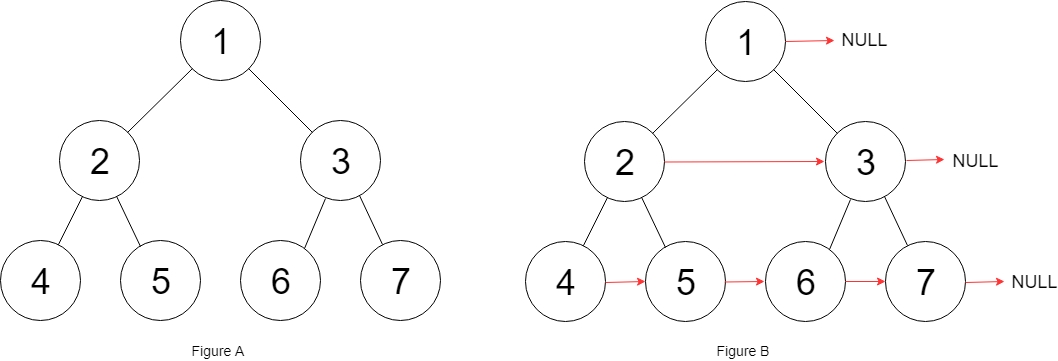7.8 Connect Level Order Siblings (medium)
You are given a perfect binary tree where all leaves are on the same level, and every parent has two children. The binary tree has the following definition:
struct Node {
int val;
Node *left;
Node *right;
Node *next;
}Populate each next pointer to point to its next right node. If there is no next right node, the next pointer should be set to NULL.
Initially, all next pointers are set to NULL.
Example 1:

Example 2:
Constraints:
The number of nodes in the tree is in the range
[0, 212 - 1].-1000 <= Node.val <= 1000
Time complexity #
The time complexity of the above algorithm is O(N), where ‘N’ is the total number of nodes in the tree. This is due to the fact that we traverse each node once.
Space complexity #
The space complexity of the above algorithm will be O(N), which is required for the queue. Since we can have a maximum of N/2 nodes at any level (this could happen only at the lowest level), therefore we will need O(N) space to store them in the queue.
Last updated
Was this helpful?